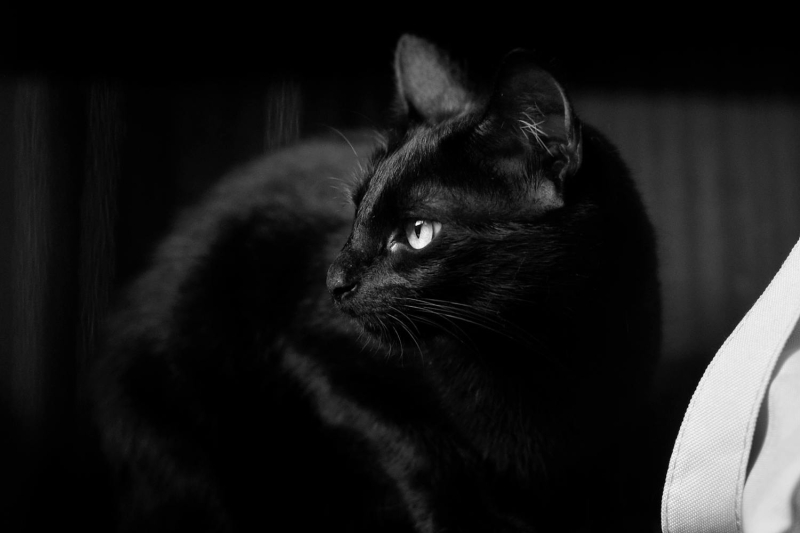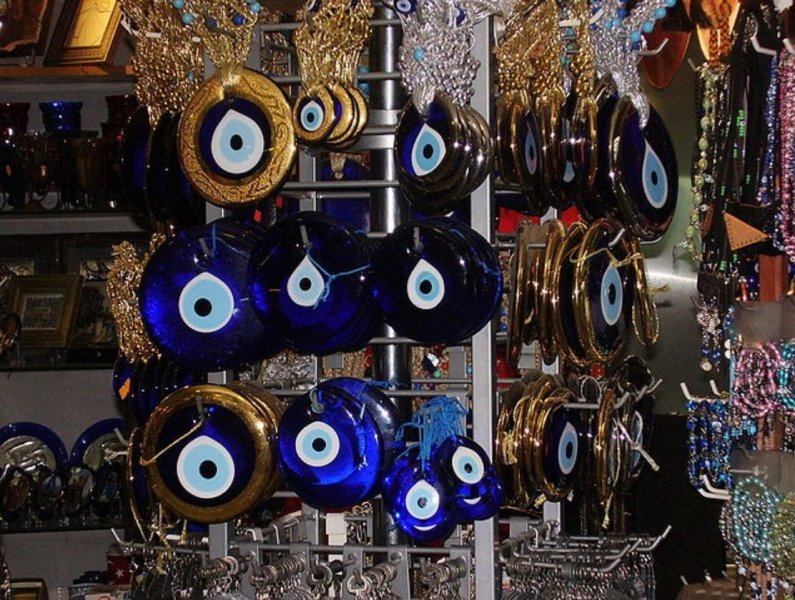
© Crina Doltu/Pexels
From the fear of the black cat to the broken mirror, superstitions still deeply permeate our modern societies. These beliefs, inherited from ancient civilizations, have endured through the ages with remarkable resilience. Whether they come from Greek and Roman mythologies, Celtic traditions, or medieval religious practices, they bear witness to the way in which human societies have attempted, over the centuries, to tame the inexplicable and protect themselves against adversity.
Yet we live in an era that is largely dominated by science and rationality, but some of these ancestral practices seem to have remained deeply rooted in our brains. As if we still needed these protective rituals and symbolic landmarks to protect us from the hazards of existence.
The Black Cat: From Divinity to Curse
In ancient Egypt, cats enjoyed divine status, revered as sacred creatures. This creature was closely associated with the goddess Bastet, goddess of fertility, home, protection and joy. However, the Middle Ages turned this perception upside down: as early as the 13th century, the‘Catholic Church associated them with demonic forces. They were then considered familiars, creatures sent by the devil to help witches in their misdeeds.
This period triggered a real feline persecution, particularly against black cats, which were perceived as emissaries of Satan. Thousands of black cats were killed in extremely cruel ways, burned alive, drowned or hanged. Ironically, this mass disappearance of cats encouraged the proliferation of rats, vectors of many diseases such as the plague. Although diminished, this stigma persists today in the collective imagination of certain societies
The Broken Mirror: A Window on the Ancient Soul
Who has never heard someone say “seven years of misfortune ” at the sight of a broken mirror ? This fear dates back to ancient Rome, where mirrors were not just household objects as they are today. It was believed that the gods contemplated the souls of mortals in them. Breaking a mirror was therefore a very serious divine offense.
The belief in the seven years of misfortune has its origins in the Roman conception that the body is renewed every seven years, the time needed to free oneself from misfortune. This fear is found in many cultures around the world, with local variations. For example, in China, it is believed that breaking a mirror can sever a person's ties to their ancestors.
Spilled Salt: As Precious as Gold
Throwing salt to ward off bad luck or ward off the devil has its roots in ancient times. At the time, salt was a rare and precious commodity, with both economic and spiritual value. To squander it was tantamount to squandering a fortune and provoking divine wrath.
The gesture of throwing a pinch over the left shoulder, however, has its origins later, in Christian belief: it was a question of blinding the devil, always posted behind oneself. This practice still resonates among certain peoples, notably in Buddhist funeral rituals. Before a ceremony, participants can sprinkle salt to purify the place and thus chase away negative energies.
Touching wood: a pagan heritage
« Touching wood » or its equivalent « touching monkey skin » (a modern variation to mock this superstition) would find its origins in ancient Celtic societies. Trees embodied the home of spirits and gods; hitting the trunk therefore allowed to invoke their protection or to thank them. Christianity reinterpreted this gesture in reference to the cross of Christ, but the practice retains its original protective function.
200% Deposit Bonus up to €3,000 180% First Deposit Bonus up to $20,000It should be noted that this idea has never been supported by solid historical and scientific evidence. The 19th century saw the emergence of the Romantic movement, which very strongly idealized the Celts, presenting them as these people living in harmony with nature, endowed with mystical powers and occult knowledge. This view has helped to associate many beliefs and practices with them, even in the absence of evidence.
The Evil Eye: A Universal Talisman
The Nazar, this distinctive eye-shaped amulet characterized by its intense blue color, represents one of the oldest and most widespread of mystical protections. This belief in an evil gaze capable of bringing misfortune has taken root in multiple civilizations, from the Mediterranean to the Middle East, from Central Asia to Latin America.

Nazar hanging in a tourist souvenir shop. © FocalPoint/Wikipedia
The protective eye takes different forms depending on the culture: set in precious jewelry, painted on pottery, embedded in the walls of houses or suspended above newborn cradles. Its function remains invariably the same: to ward off the “evil eye” /em>”, this harmful force supposedly emitted by an envious or malicious look.
If today the nazar has become widely democratized, becoming a decorative element prized by tourists and a popular fashion accessory, it retains its protective dimension for many communities.
< h2>The Ravens: Messengers of the Gods
The raven's sinister reputation dates back to Greek mythology, where these birds held a special place in divine tales. According to legend, the raven, originally pure white, was one of the favored messengers of Apollo, god of light and poetry. One day, Apollo entrusted the bird Corvus with a sacred mission: to bring back water to perform a divine ritual. But the bird, distracted by a fig tree laden with ripe fruit, lingered on the way to feast.
On his late return, Corvus tried to justify his delay by accusing a snake of having blocked his journey. Furious at this lie, Apollo cursed him, turning its plumage jet black and condemning it to utter hoarse cries for eternity. This divine curse consequently made the raven a dire omen, whose croaking would announce the approaching death.
Halloween: dressing up to fool the spirits
This tradition has its origins in the Celtic festival of Samhain, celebrating the end of the harvest. During this time, the veil separating the world of the living and that of the dead was supposed to be thinner, allowing the spirits to cross over and interact with the human world. Bonfires were lit there, which served as guides for the souls of the deceased to the afterlife and to ward off evil spirits.
The Scots disguised themselves to escape evil spiritssupposedly roaming around during this time. Irish immigration to the United States in the 19th century contributed greatly to the popularization of Halloween, bringing with it Celtic traditions. While the modern holiday has completely lost its spiritual dimension, it unconsciously perpetuates these ancestral practices. Despite this evolution, certain Celtic symbols, such as pumpkins (representing severed heads) and bonfires, have remained associated with Halloween.
The funniest thing about all this is that even in the age of electric cars and AI, some of us still sometimes touch wood when we talk about misfortune or avoid black cats. Homo sapiens is definitely never very far from its mystical roots.
- Superstitions are rooted in ancient beliefs, often related to protection or explanation of the inexplicable.
- Practices such as touching wood or avoiding black cats illustrate the cultural and religious evolution of these beliefs.
- Despite scientific advances, these ancestral rituals can still influence our daily behavior.
📍 To not miss any Presse-citron news, follow us on Google News and WhatsApp.
[ ]

